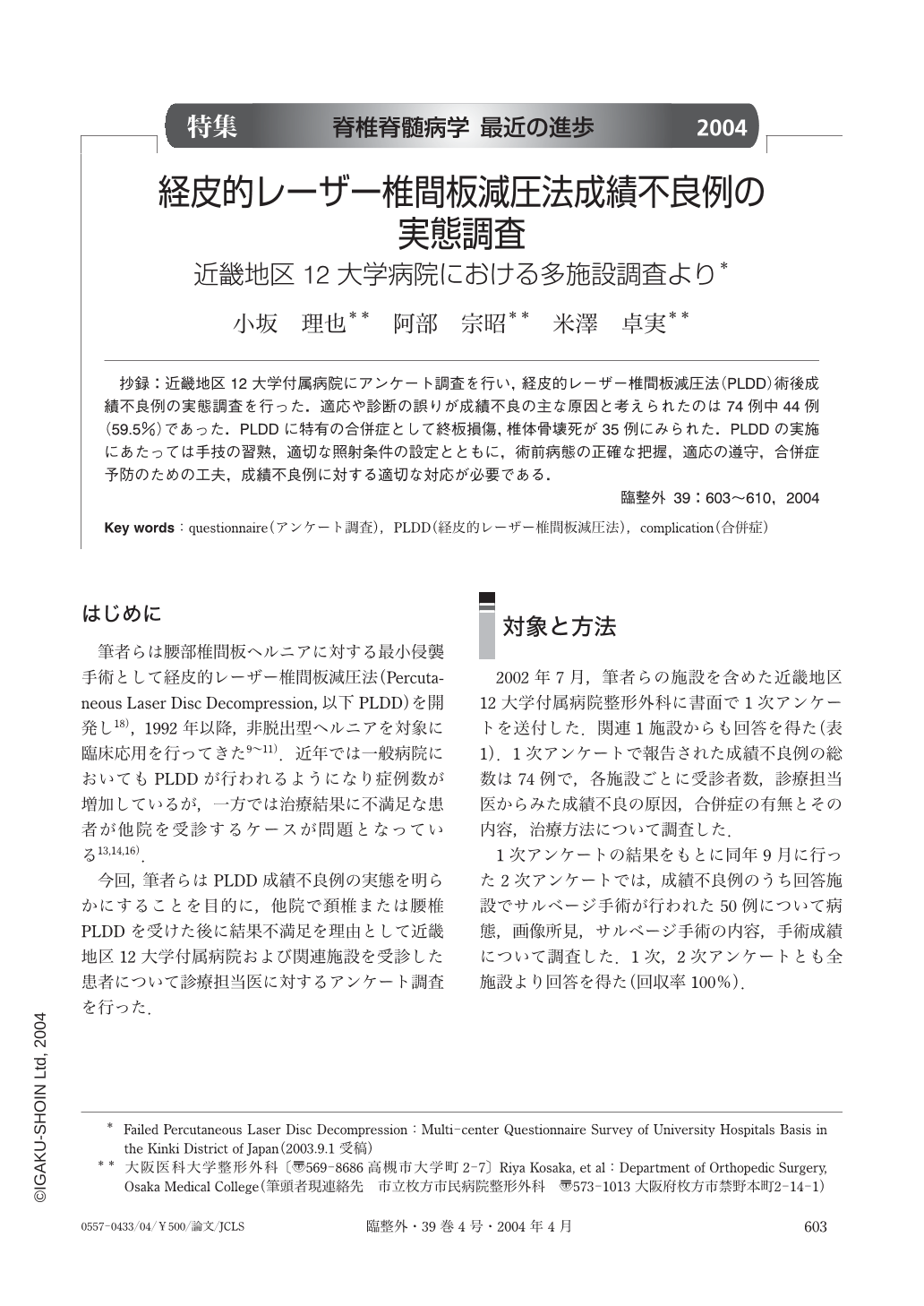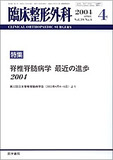Japanese
English
- 有料閲覧
- Abstract 文献概要
- 1ページ目 Look Inside
抄録:近畿地区12大学付属病院にアンケート調査を行い,経皮的レーザー椎間板減圧法(PLDD)術後成績不良例の実態調査を行った.適応や診断の誤りが成績不良の主な原因と考えられたのは74例中44例(59.5%)であった.PLDDに特有の合併症として終板損傷,椎体骨壊死が35例にみられた.PLDDの実施にあたっては手技の習熟,適切な照射条件の設定とともに,術前病態の正確な把握,適応の遵守,合併症予防のための工夫,成績不良例に対する適切な対応が必要である.
In accordance with an increasing number of patients receiving percutaneous laser disc decompression (PLDD) in Japan, several reports of unsatisfactory outcomes have been emerging for the past 5-6 years. To detect the clinical background of unsatisfactory cases, we conducted a questionnaire survey for doctors who managed patients after failed PLDD performed at the other private hospitals. Clinical data of 74 patients was collected and was retrospectively analyzed. The most common cause of failure in PLDD was inappropriate preoperative diagnosis and/or indication which included non-contained disc, lateral recess stenosis and segmental instability in 44 of 74 patients (59.5%). Second major cause of failure was perioperative complication. A particular complication specific to PLDD procedure was end-plate injury adjacent to the disc with or without bone necrosis on MRI, which was presumably caused by thermal damage (35 of 74 patients). Some patients was primarily treated with PLDD by anesthesiologist or general surgeon ; unspecialized doctors to spine surgery. To achieve a satisfactory outcome of PLDD, special attentions should be paid to precise technique of needle placement, an appropriate regulation of laser energy, adequate preoperative diagnosis, adherence to strict therapeutic indication, precaution for possible complications and prompt decision making for salvage surgery, if required.

Copyright © 2004, Igaku-Shoin Ltd. All rights reserved.


